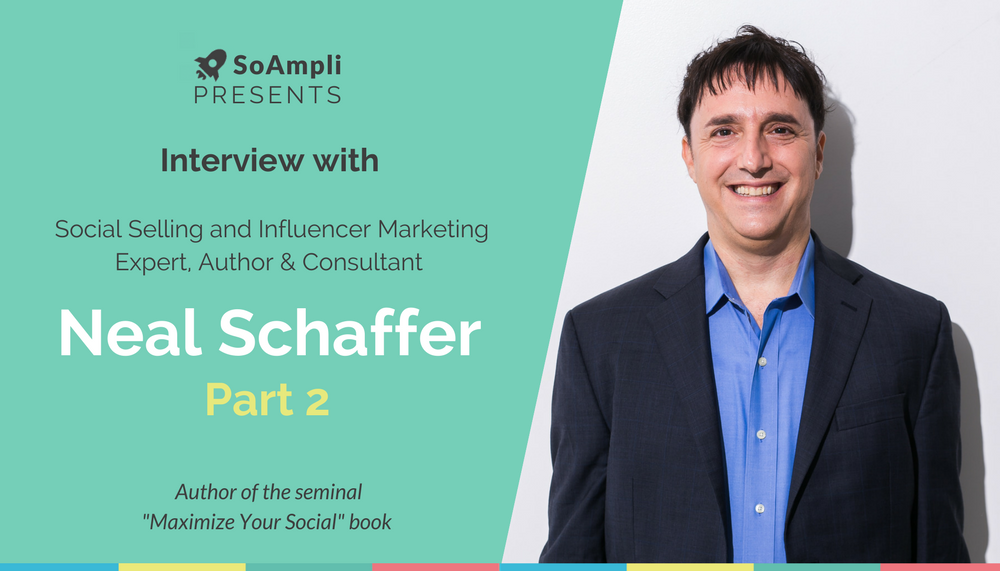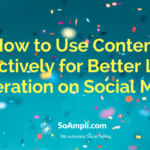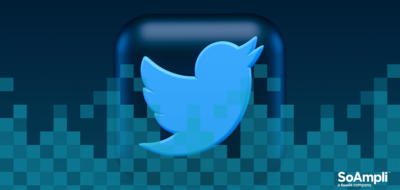Not too long ago, we had the pleasure of sitting down with international social selling and influencer marketing expert Neal Schaffer to discover how his passion for social selling was born and what his social media routine looks like, as well as discuss his top suggestions for B2B businesses looking to step up their social media strategy.
But that’s not all we covered during our inspiring chat. In the second part of our exclusive interview, we dig deep into the topic of influencer marketing for B2B businesses, and ask Neal to share some of his top social selling success stories…
Q: As an influencer yourself, what do you see is the role of influencer marketing, especially in the B2B space?
I strongly believe that every social media strategy should have an influencer component to it, even in the B2B space. If you think about it, a lot of B2B companies are part of very specific ecosystems made of partners, system integrators, distributors, decision-makers, and in this landscape there are certain experts that can influence a large number of decision-makers.
Let me give you an example. I am currently training a certain financial services company in social selling; when I was doing a pre-training assessment call, I asked: “How do you use social media?”, and one person said: “I use social media to engage with the influencers in my industry”. I thought that was really interesting because this salesperson was not particularly social media savvy, and yet she used the term “influencer”. And when I asked what that meant to her, she said that influencers are certain people in her industry that could provide advice, recommendations, leads and referrals to her business.
The concept of influencers doesn’t apply only to Instagrammers or Mummy bloggers.
You should consider influencer marketing as part of a relationship-building exercise, instead of simply buying someone to post a photo or a blog. Do some research, catalog the “influencers” that are unique to your industry, and then translate that to digital and see who has an influential presence in social media that you might be able to influence and potentially collaborate with.
Q: What advice would you give to B2B brands wanting to have a go at influencer marketing?
You need to start with identifying who the influencers in your industry are. You need to ask your salespeople, your marketing folks, your employees: “Who are the go-to people for you?”. Whether it’s bloggers, experts on social media, partners or employees, ask yourself: if these people become our advocates, can they help us amplify our voice and get one step closer to our current and potential new clients?
Beyond that, you’ll need to approach your influencer strategy – and I know it’s a weird analogy – almost as you would do with a traditional marketing funnel. The bottom of that funnel is a specific influencer becoming an advocate for your brand. To get there, you need to start by engaging with all the people you have identified as influencers, and see who responds. A simple initial engagement could be to follow them, then follow up a few days later with a like or a retweet. You want to look for those influencers who are really open to engage with you, otherwise it’s going to be “come pay to play”, and I personally think that’s not the best approach, especially for B2B.
After a while, you may get a subset of 20-30% of your original list, and these are the people you want to work with to launch a pilot programme. Where it makes sense and adds value to your own publishing, I would start with curating content from them to help them generate additional exposure; then, once you see some engagement on social media, you can reach out directly, asking if there is any way in which you can help them, maybe providing an exclusive piece of research for them. You can then invite them to create something together with you, to become part of your own content marketing, and really try to bring these influencers are close to your company as possible. For example, when you do events, invite them! In doing so, let them help you become the voice of the customer. You should already have your own voice of the customer, but these influencers are in an ideal place to know the industry in a broader way, they know your competitors, they have a different insight into the sector.
When you’re trying to build the relationship with the influencer, make sure to be human, to be authentic.
Let them know that you think they’re an influencer, that you’ve read their content and that you agree with their perspective, or that you have other opinions, but start a conversation naturally, and don’t pick up the phone or email them before you’ve engaged with them in social. That’s what social helps you do, it helps you get multiple touches and break the ice.
Does Your Influencer Marketing Strategy have a Content-Centric Approach? https://t.co/Ygtv8LSGGd #influencermarketing
— Neal Schaffer (@NealSchaffer) 31 January 2018
As far as measuring, this is connected to the question of social media ROI. You need to assess how much time and money you have invested in building these relationships, and what you get out of it. It should then be pretty simple to see. I don’t think it’s a hard line ROI figure, it’s really about how much more exposure we are gaining, how many more leads, how much more traffic to our website, it’s really a matter of looking at those numbers and seeing if your influencer engagement led to it.
Q: What’s your favourite ‘social selling’ success story?
In my own experience, LinkedIn Groups have been amazing to help me find business! For example, once I saw a notification pop up in my inbox about someone posting a challenge (“Prove to me the ROI of social media”) in one of these groups; when I went over to the person’s profile, I realised he happened to be in Orange County, where I live. So I reached out to him, just saying: “I saw your conversation on LinkedIn group, I’d love to talk to you about social media ROI, do you want to meet for a coffee?”, and that’s how that business relationship started. This is a perfect example of how social media provides the spark, it helps you cross that chasm that leads to the sale. This example comes from a LinkedIn Group but it could have equally come from a Facebook Group, a Direct Message on Twitter, or even a chat inside an Instagram post’s comment.
Another one – and this is a LinkedIn case study from some time ago – is a gentleman who went in and decided to finally upload his entire contact database onto LinkedIn and send out invites. And when he did, he included a message that said “Hey, I just started a consulting company! I really treasure our relationship and I’d like to keep in touch. Let me know if I can be of any help”. This simple message then led to a few business negotiations, including one that turned into a $1M deal.
In general, the most successful salespeople are the ones that really understand the digital ecosystem we’re in right now and can listen, engage, create and curate content.
I always say that social media replaces nothing, yet complements everything. When I do social selling training, I say that social media should be another tool in your toolbox, which helps you develop and nourish business relationships in a deeper and quicker way than a lot of other strategies. It also allows you to scale – from a one to one, to a one to many, as you publish content. That, to me, is the brilliance behind social selling!
Read Part 1 of this interview
Interested in more expert advice on lead generation on social media, social selling and influencer marketing? Discover more of our exclusive interviews:







